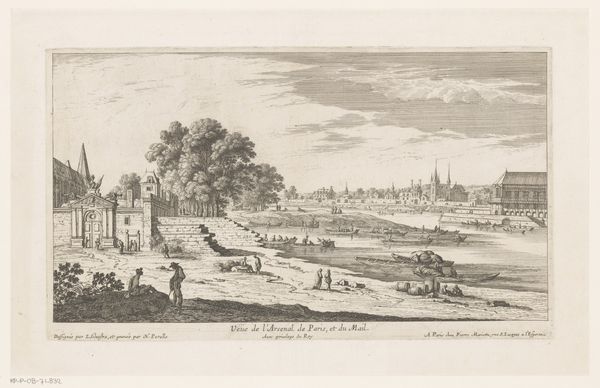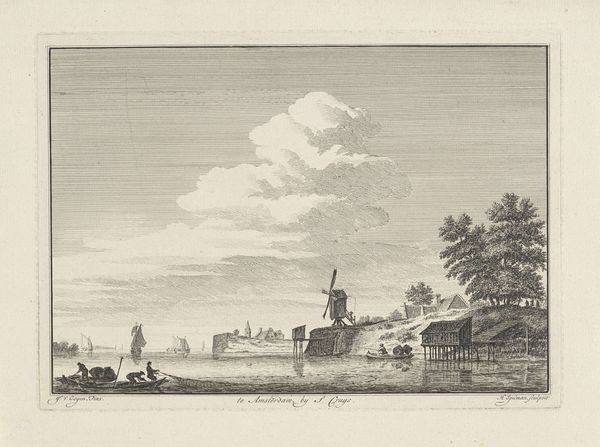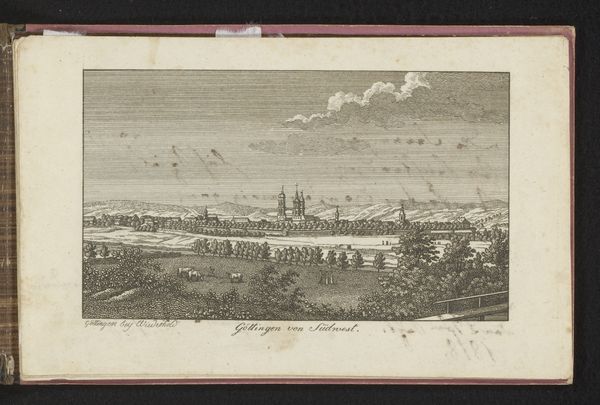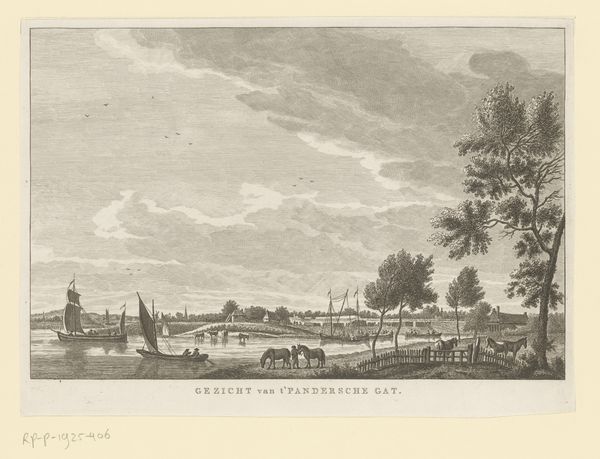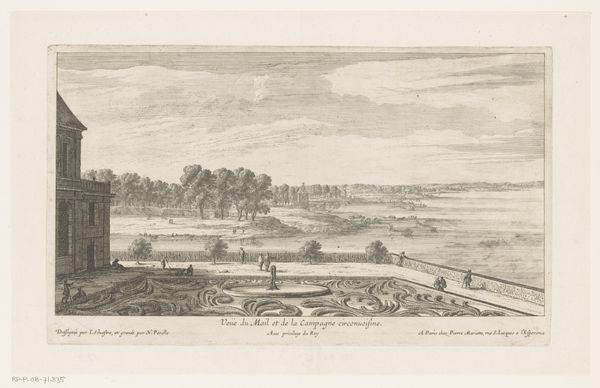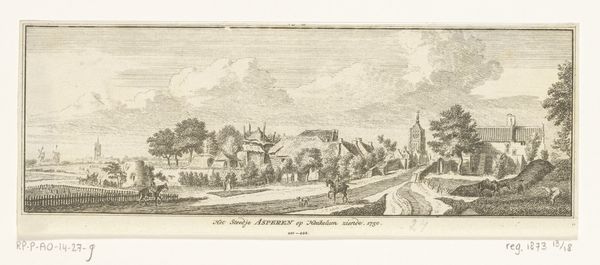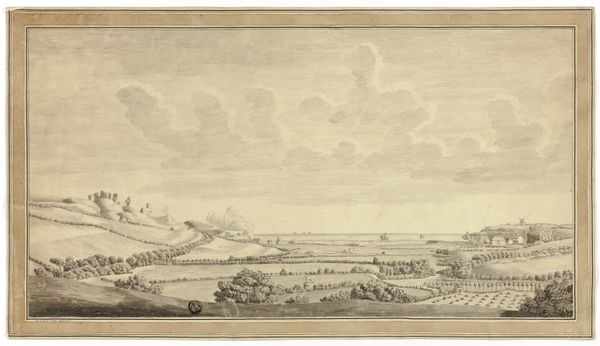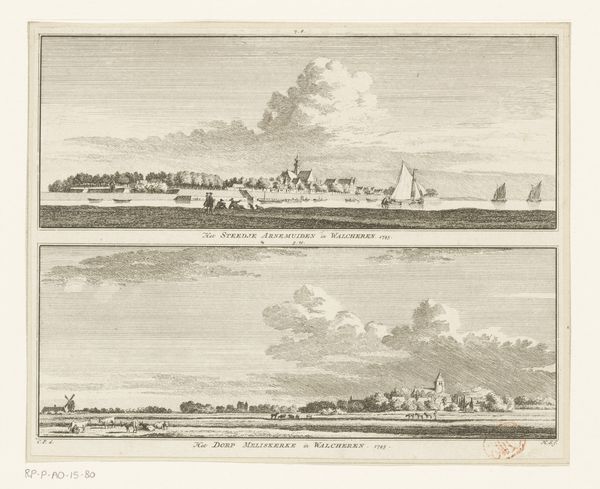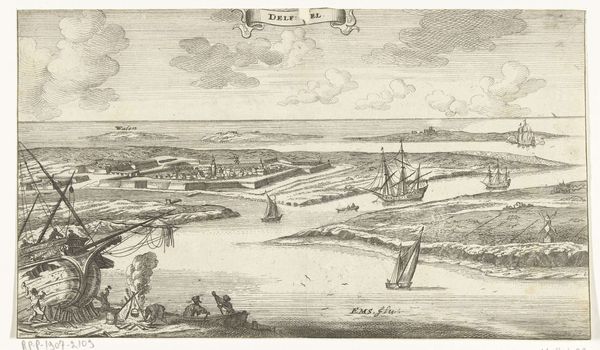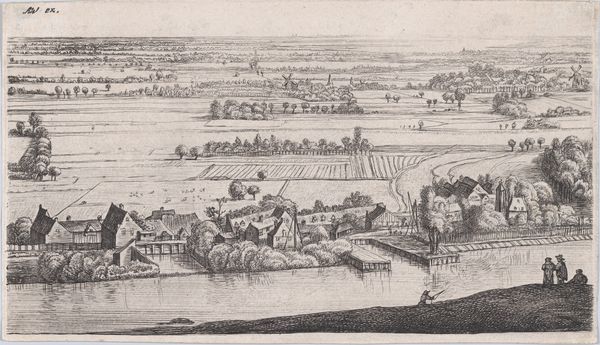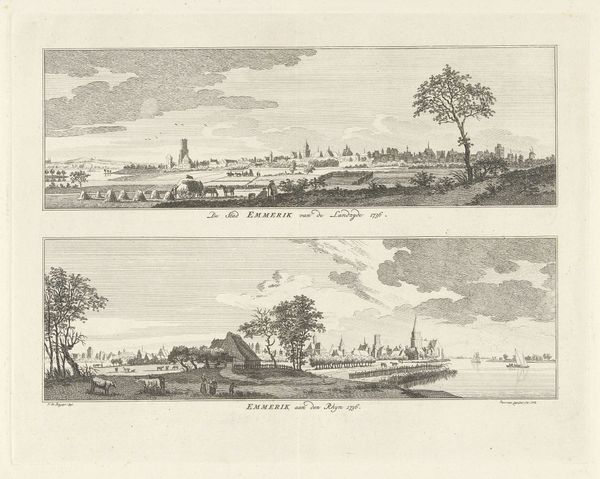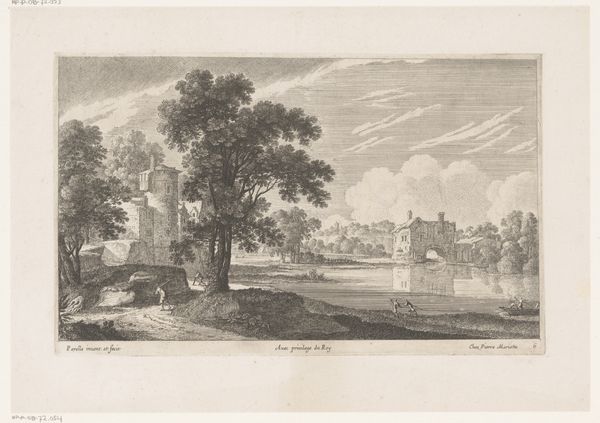
drawing, lithograph, print, etching, pencil
#
drawing
#
lithograph
# print
#
etching
#
landscape
#
etching
#
pencil drawing
#
romanticism
#
pencil
#
cityscape
Dimensions: 233 mm (height) x 299 mm (width) (bladmaal)
Editor: Here we have Emil Wolff’s "Helsingør og Kronborg," placing its creation sometime between 1800 and 1849. It's a print composed of drawing, lithograph, and etching techniques. Looking at this, I’m immediately struck by the composition—the way the scene unfolds from the foreground up to the castle. What do you see in this piece from a formal perspective? Curator: The beauty here is undoubtedly found within the structural balance. Note how the artist orchestrates a sense of depth through meticulous tonal gradations, employing varying densities of line work in the foreground, middle ground, and background to establish recession into space. The strategically placed windmill mirrors the silhouette of Kronborg Castle, creating a visual echo, binding the composition and establishing equilibrium. Can you see the implications of this conscious placement? Editor: So, the mirroring effect isn’t accidental—it is there to create a balance within the image. The shapes are intentionally repeated. Curator: Precisely. The artist utilizes semiotics; this conscious act signifies intentionality and establishes structural integrity. Examine also the rhythmic interplay between the natural forms and the architectural ones. The organic curve of the road and trees contrasts yet complements the straight lines and sharp angles of the buildings. Editor: I’m starting to appreciate the attention to detail and balance, things I hadn't initially noticed. It is more than just a landscape. Curator: It speaks to the profound connection between structural design and meaning. Wolff orchestrates visual form that reflects how art mediates nature and culture. It invites us to decode, question, and challenge our perceptions of the visible. Editor: Thank you. I can definitely look at the image now and admire the compositional strategies and repeating motifs that construct the harmony and tension within the work.
Comments
No comments
Be the first to comment and join the conversation on the ultimate creative platform.
